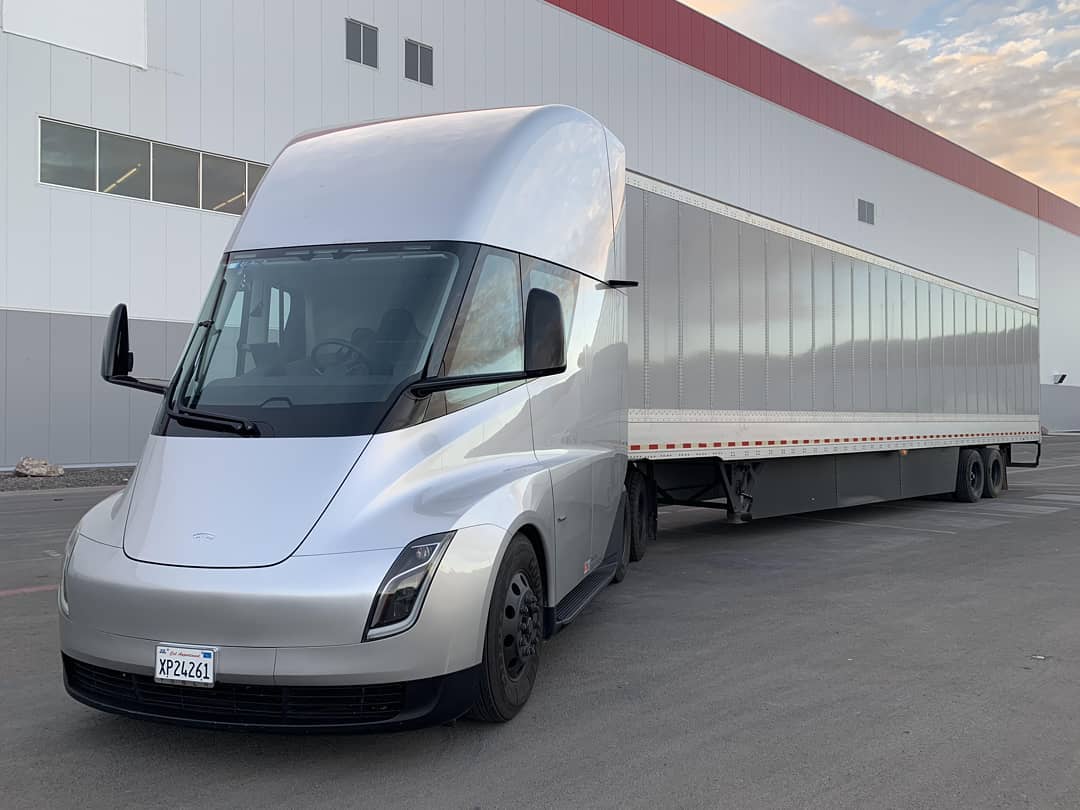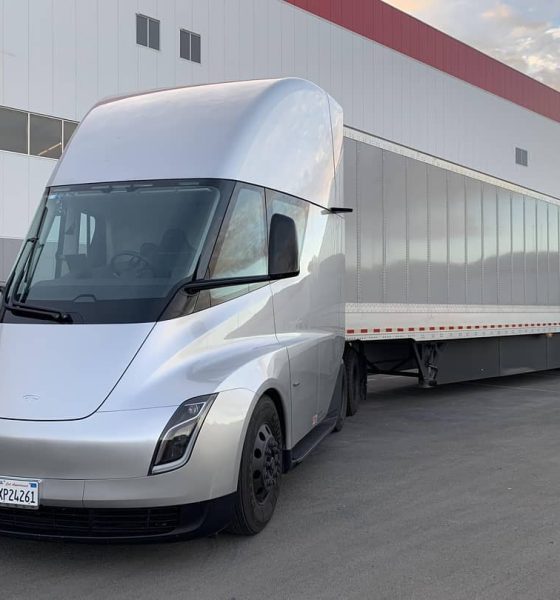

News
Tesla addresses Zero-Cobalt future in latest Impact Report
Tesla outlined its goal for responsible Cobalt sourcing in its latest 2019 Impact Report, released on June 8, 2020.
The automaker plans to eventually produce a zero-cobalt battery for its vehicles and energy products, in its bid to source metals in a responsible fashion that maintains not only the integrity of the company but also the human rights of those involved in the sourcing of raw materials.
“Tesla’s batteries use nickel-rich cathode materials which contain less cobalt than other widely use cathode chemistries in the industry with our ultimate goal being to eliminate cobalt completely from our cells,” notes Tesla in its Impact Report.
Tesla’s lithium-ion batteries utilize an NCA Cathode makeup, comprised of a Nickel-Cobalt-Aluminum structure. The combination of the three metals creates a battery that has longevity and stability throughout the life cycle of the vehicle. Cobalt supplies a battery with high-rate performance and enhances cycle stability when exposed to high levels of heat, according to ScienceMag.
Cobalt, while controversial, is a crucial element in lithium-ion batteries, at least for now. While Tesla continues to work toward the omittance of the element from its batteries, the challenge is finding another metal that can replace Cobalt while maintaining the integrity of the battery.
Under a section titled “Supply Chain Introduction: Responsible Material Sourcing,” Tesla addresses and details its “Supplier Code of Conduct” and “Human Rights and Conflict Minerals Policy.” The two documents outline the company’s expectations for its suppliers and partners and require all members of the Tesla supply chain to uphold responsible and integrity-focused techniques when acquiring Cobalt.
“Tesla is committed to making working conditions in our supply chain safe and humane, ensuring that workers are treated with respect and dignity and that manufacturing processes are environmentally responsible,” the report indicates.
Tesla’s plans to utilize zero-Cobalt batteries are certainly in the company’s future plans. However, while the element is still included in the current battery makeup, responsible sourcing is among Tesla’s main concerns.
Suppliers involved in sourcing Cobalt for the electric automaker are required and expected to follow Tesla’s Code of Business Conduct and Ethics. Although many of the company’s direct suppliers obtain some raw materials through sub-contractors, Tesla conducts due diligence practices that maintain the safety and respect of workers everywhere.
Tesla has even gone as far as removing some risks from its supply chain. The report explicitly mentions areas notorious for child labor, especially in the field of Cobalt mining. “Because Tesla recognizes the higher risks of human rights issues within cobalt supply chains, particularly for child labor in the Democratic Republic of Congo, we have made a significant effort to establish processes to remove these risks from our supply chain,” the company wrote.
The eventual phasing out of Cobalt from the batteries Tesla uses requires an extreme process of due diligence, now. Cobalt has been one of the primary sources of criticism for non-EV supporters. In particular, the issue of child labor has driven as much skepticism from critics as nearly any other topic. However, the regular auditing and due diligence have helped Tesla maintain responsible labor and material acquisition practices, effectively eliminating any criticism for utilizing Cobalt at the current time.
Currently, the company’s cells use nickel-rich cathode materials and contain less Cobalt than any other widely used cathode chemistries in the EV sector. Eventually, zero-Cobalt batteries will be introduced into Tesla’s EVs Still, a controversial subject like the sourcing of the metal requires a tedious and specific amount of verification through a series of annual third-party audits.
The transparency that Tesla provides throughout the Impact Report’s Cobalt Sourcing section shows a responsible process of mining the metal. Tesla states that it has mapped significant areas of the Cobalt supply chain, and ethics concerning sourcing the metal will continue to improve over time.
Tesla’s 2019 Impact Report is available below.

News
Nvidia CEO Jensen Huang explains difference between Tesla FSD and Alpamayo
“Tesla’s FSD stack is completely world-class,” the Nvidia CEO said.

NVIDIA CEO Jensen Huang has offered high praise for Tesla’s Full Self-Driving (FSD) system during a Q&A at CES 2026, calling it “world-class” and “state-of-the-art” in design, training, and performance.
More importantly, he also shared some insights about the key differences between FSD and Nvidia’s recently announced Alpamayo system.
Jensen Huang’s praise for Tesla FSD
Nvidia made headlines at CES following its announcement of Alpamayo, which uses artificial intelligence to accelerate the development of autonomous driving solutions. Due to its focus on AI, many started speculating that Alpamayo would be a direct rival to FSD. This was somewhat addressed by Elon Musk, who predicted that “they will find that it’s easy to get to 99% and then super hard to solve the long tail of the distribution.”
During his Q&A, Nvidia CEO Jensen Huang was asked about the difference between FSD and Alpamayo. His response was extensive:
“Tesla’s FSD stack is completely world-class. They’ve been working on it for quite some time. It’s world-class not only in the number of miles it’s accumulated, but in the way it’s designed, the way they do training, data collection, curation, synthetic data generation, and all of their simulation technologies.
“Of course, the latest generation is end-to-end Full Self-Driving—meaning it’s one large model trained end to end. And so… Elon’s AD system is, in every way, 100% state-of-the-art. I’m really quite impressed by the technology. I have it, and I drive it in our house, and it works incredibly well,” the Nvidia CEO said.
Nvidia’s platform approach vs Tesla’s integration
Huang also stated that Nvidia’s Alpamayo system was built around a fundamentally different philosophy from Tesla’s. Rather than developing self-driving cars itself, Nvidia supplies the full autonomous technology stack for other companies to use.
“Nvidia doesn’t build self-driving cars. We build the full stack so others can,” Huang said, explaining that Nvidia provides separate systems for training, simulation, and in-vehicle computing, all supported by shared software.
He added that customers can adopt as much or as little of the platform as they need, noting that Nvidia works across the industry, including with Tesla on training systems and companies like Waymo, XPeng, and Nuro on vehicle computing.
“So our system is really quite pervasive because we’re a technology platform provider. That’s the primary difference. There’s no question in our mind that, of the billion cars on the road today, in another 10 years’ time, hundreds of millions of them will have great autonomous capability. This is likely one of the largest, fastest-growing technology industries over the next decade.”
He also emphasized Nvidia’s open approach, saying the company open-sources its models and helps partners train their own systems. “We’re not a self-driving car company. We’re enabling the autonomous industry,” Huang said.
Elon Musk
Elon Musk confirms xAI’s purchase of five 380 MW natural gas turbines
The deal, which was confirmed by Musk on X, highlights xAI’s effort to aggressively scale its operations.

xAI, Elon Musk’s artificial intelligence startup, has purchased five additional 380 MW natural gas turbines from South Korea’s Doosan Enerbility to power its growing supercomputer clusters.
The deal, which was confirmed by Musk on X, highlights xAI’s effort to aggressively scale its operations.
xAI’s turbine deal details
News of xAI’s new turbines was shared on social media platform X, with user @SemiAnalysis_ stating that the turbines were produced by South Korea’s Doosan Enerbility. As noted in an Asian Business Daily report, Doosan Enerbility announced last October that it signed a contract to supply two 380 MW gas turbines for a major U.S. tech company. Doosan later noted in December that it secured an order for three more 380 MW gas turbines.
As per the X user, the gas turbines would power an additional 600,000+ GB200 NVL72 equivalent size cluster. This should make xAI’s facilities among the largest in the world. In a reply, Elon Musk confirmed that xAI did purchase the turbines. “True,” Musk wrote in a post on X.
xAI’s ambitions
Recent reports have indicated that xAI closed an upsized $20 billion Series E funding round, exceeding the initial $15 billion target to fuel rapid infrastructure scaling and AI product development. The funding, as per the AI startup, “will accelerate our world-leading infrastructure buildout, enable the rapid development and deployment of transformative AI products.”
The company also teased the rollout of its upcoming frontier AI model. “Looking ahead, Grok 5 is currently in training, and we are focused on launching innovative new consumer and enterprise products that harness the power of Grok, Colossus, and 𝕏 to transform how we live, work, and play,” xAI wrote in a post on its website.
Elon Musk
Elon Musk’s xAI closes upsized $20B Series E funding round
xAI announced the investment round in a post on its official website.

xAI has closed an upsized $20 billion Series E funding round, exceeding the initial $15 billion target to fuel rapid infrastructure scaling and AI product development.
xAI announced the investment round in a post on its official website.
A $20 billion Series E round
As noted by the artificial intelligence startup in its post, the Series E funding round attracted a diverse group of investors, including Valor Equity Partners, Stepstone Group, Fidelity Management & Research Company, Qatar Investment Authority, MGX, and Baron Capital Group, among others.
Strategic partners NVIDIA and Cisco Investments also continued support for building the world’s largest GPU clusters.
As xAI stated, “This financing will accelerate our world-leading infrastructure buildout, enable the rapid development and deployment of transformative AI products reaching billions of users, and fuel groundbreaking research advancing xAI’s core mission: Understanding the Universe.”
xAI’s core mission
Th Series E funding builds on xAI’s previous rounds, powering Grok advancements and massive compute expansions like the Memphis supercluster. The upsized demand reflects growing recognition of xAI’s potential in frontier AI.
xAI also highlighted several of its breakthroughs in 2025, from the buildout of Colossus I and II, which ended with over 1 million H100 GPU equivalents, and the rollout of the Grok 4 Series, Grok Voice, and Grok Imagine, among others. The company also confirmed that work is already underway to train the flagship large language model’s next iteration, Grok 5.
“Looking ahead, Grok 5 is currently in training, and we are focused on launching innovative new consumer and enterprise products that harness the power of Grok, Colossus, and 𝕏 to transform how we live, work, and play,” xAI wrote.








